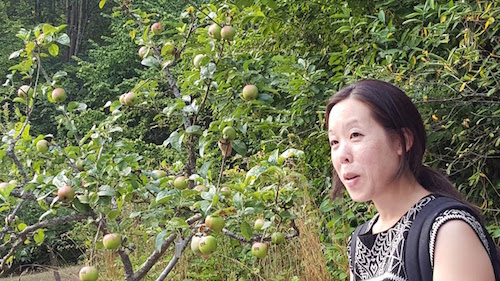An interview with Shin Yu Pai, Redmond's new Poet Laureate

Shin Yu Pai is one of the smartest, most intellectually curious poets in the region. Her projects are always ambitious, and they string together multiple perspectives and interests — history, media, art, site-specificity — to create something new. So the news that she’s been named the Redmond Poet Laureate is especially exciting. Pai’s poetry has incorporated family history and photography and even botany to tell a new kind of story through poetry; she’s exactly the kind of poet you want to represent a city, because she is capable of thinking about all the different levels of what it means to be a city.
Congratulations on the title! Did the city approach you with the offer to be poet laureate? Did they share their reasoning for why they selected you?
The city has an open application process and I was strongly encouraged to apply by a few of the staff. I went through a panel interview and also met with the mayor in the later stages. My sense is that Redmond is very ethnically diverse, a large immigrant population, and they wanted perhaps a Laureate that could reflect a different part of its community. Past Laureates were all Caucasian. I've also had experience doing a lot of collaborative work and community engagement, as well as writing commissioned work for museums — i.e. occasional poems that were event and site specific. It may be too that I am a little bit of an unusual profile for a poet in that I am engaged in visual and public work — that is, I bring different strategies.
We’ve seen an abundance of poets laureate and similar positions created lately—we have a new Civic Poet position in Seattle, for example. What do you think your new designation means, to you and to Redmond? Why is it important to have poets laureate?
For me, the designation is an opportunity to think about a different kind of collaboration. Historically, I have worked with individual artists or groups of artists. The role as Poet Laureate represents an opportunity to collaborate with an entire community and city to bring an element of civic engagement into my work — a way to infuse poetry with a social practice element while increasing the visibility and awareness of poetry within a place. Laureates have the ability to embody, represent, and amplify underrepresented perspectives within a community — raising civic discourse through the object of a poem can be an effective tool in creating distance and different entry points into issues that can bring a new perspective or insight through creative and associative thinking.
The City of Redmond has had three previous Laureates and this program reflects a level of the city's ongoing commitment to the arts.
What do you plan on doing with the role?
I plan on co-creating and developing some programs with the public library in time for National Poetry Month in April — poetry tot time and curated exhibitions — and have some other ideas in mind. I want to treat it as an artist-in-residency and make new work through collaborations with some of the tech resources on the East side, like Digipen. Create projects that could incorporate text projection on buildings, or in the night sky. I plan on writing a poem for Redmond Lights through crowdsourcing ideas from the community based on their favorite holiday and winter films. I will also compose some texts for a temporary installation on the Redmond Connector trails. I'd like to find some way to do something with poetry and 3-D printing but that idea is still incubating. I also hear there's an orchard at the Farrel-McWhirter Farm that could lend itself to some possible installation work.
You recently grew a poem in Piper's Orchard in Carkeek Park as part of a site-specific installation called HEIRLOOM. How do you feel about that project, now that we're moving into the fall?
I miss being in the orchard every week, interacting with the trees and that project. All but a few of the apples were gone by mid-September — there was a massive wind and rainstorm that took out many of the apples in late August. I did not get to see the ripened tattooed fruit — though several photographers that I worked with were able to capture various stages. HEIRLOOM taught me about adaptation and change, giving up control of one's work to external elements. There may be future opportunities to revisit that work or to do new installations in Piper's and I want to think more about how I might do it differently based on things that I learned this season. I'm working on a book version of the project as a small run limited edition handmade book.
What are you working on next, after HEIRLOOM? Do you feel any pressure to do something even bigger and more ambitious every time you complete one project and begin another?
Some of the Redmond work will take priority. I do feel a self-imposed pressure to reinvent and innovate continually and to also pursue what's meaningful. The HEIRLOOM project took a long time and iterations to come into being — over a year — which is a very different way of working for me. I think some of that process has affected how I want to think about the kinds of work that I pursue in the future. I'm interested in continuing to bring together my different artmaking practices and interests and would love, for instance, to explore making more sound-based or vocal work. I'd also like to get back to writing personal essays about my family and history.